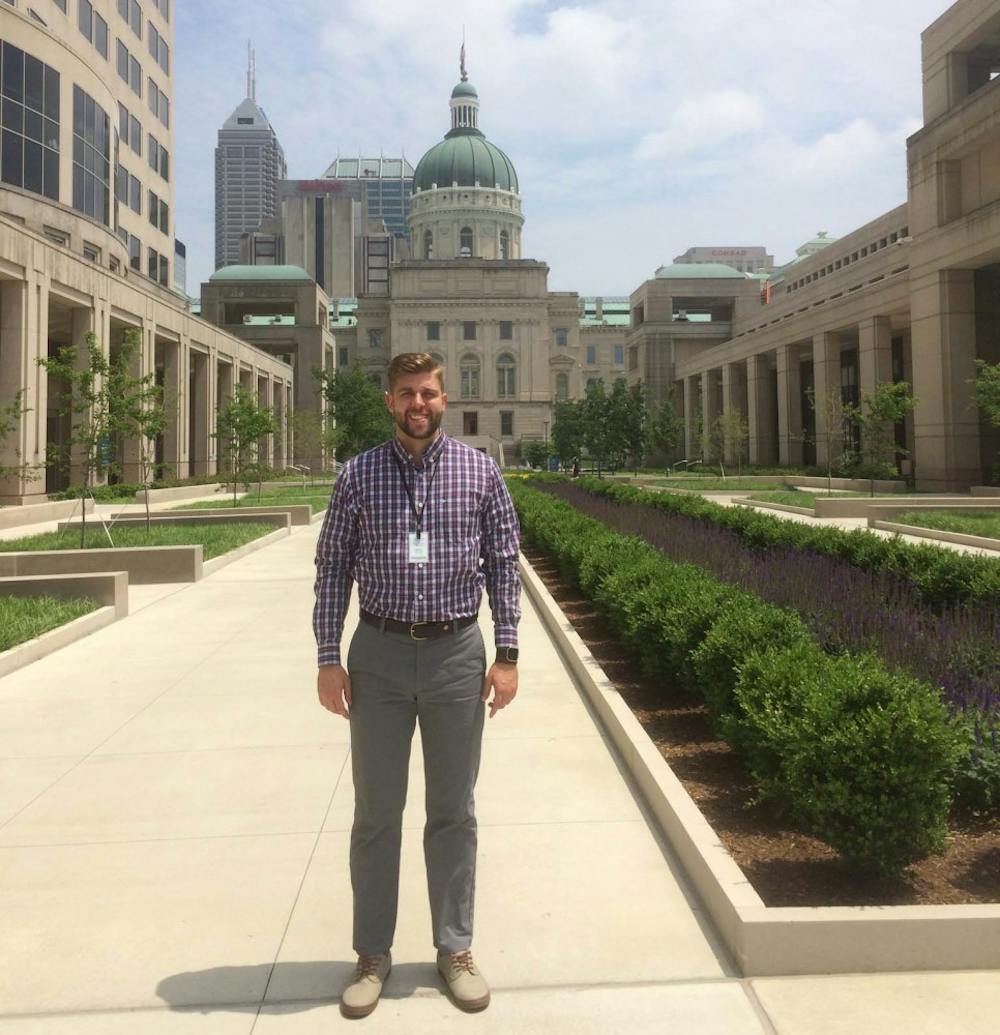Editor's note: Intern Spotlight is a Ball State Daily News series profiling Ball State students and their summer internships. If you have any suggestions as to who we should feature next, send an email to editor@bsudailynews.com.
Last summer, Ball State 2018 graduate Connor McCoy traveled the state of Indiana as an archaeologist intern for Indiana’s Department of Transportation, INDOT.
From gaining hands-on archaeological field experience to budgeting for new roads, McCoy got to be a part of a private sector for Indiana’s Department of Transportation, working as the archeological intern.
“The archaeologist internship in INDOT’s Cultural Resources Office entails archaeological fieldwork, artifact cleaning and analysis, report review and writing, participation in staff meetings and carrying out independent research projects,” said Shaun Miller, McCoy’s supervisor. “Our interns assist both the archaeology and history units to complete Section 106 for all of INDOT’s many projects.”
As an archaeologist student, McCoy hopes to work as an archaeologist for the government in the future, which is why he chose to apply for the INDOT internship.
McCoy heard about the internship opportunity through the archaeology department at Ball State and other students who had done the internship.
He said the application process was fairly easy so he decided it was worth it to apply. After they reviewed his application, he was called in for an interview and eventually given the position.
In mid-May 2018, McCoy began traveling his home state with different groups in INDOT, helping in whatever ways he could. His internship continued until the middle of August 2018.
“Seeing how the state I live in, and always have lived in, operates was eye opening. I got to write my first report and publish my first site,” McCoy said. “We were on a farmer’s property where an irrigation ditch was located when I found some things. I determined that before the irrigation ditch was there, it was a low spot where people would dispose of unwanted items. Many historical pieces had been dumped there, but crushed due to the building of the irrigation ditch.”
McCoy said the hardest part about the internship was learning how to be a more technical writer. A crucial part of his position was to write reports about the sites INDOT was working on, and he said it was important to be detailed and concise.
Currently, McCoy is a graduate student at Ball State, working to get his Master’s Degree in archaeology.
“My [Ball State] anthropology courses aided me in understanding archaeological laws, theories and methods [during my internship,]” McCoy said. “My history courses gave me critical background knowledge about Indiana, which I used to interpret archaeological sites. My geography courses aided me in understanding landscapes and creating maps using Geographic Information System(GIS) technology.”
Miller said he has seen how the INDOT internship is beneficial for students like McCoy to gain real-life experience, but he said it also impacts the company.
“I believe the internship has improved the company by developing a young crop of future archaeologists who understand Cultural Resource Management who may eventually work for INDOT in the future as archaeological consultants,” Miller said. “It’s very satisfying to see a past intern employed by an archaeological consulting firm and working on an INDOT project.”
Contact Kyleigh Forbes with comments at kcforbes@bsu.edu.




